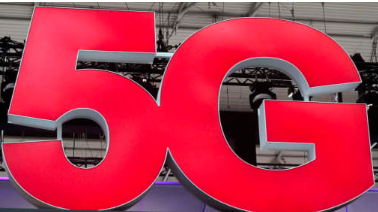- Ameya360 Component Supply Platform >
- Trade news >
- Apple Said to Inspire Intel 5G Chip
Apple Said to Inspire Intel 5G Chip
Intel announced plans for an integrated 5G modem, targeting 2020, when the market is expected to be in full gear. The news could accelerate work on an integrated chipset from Qualcomm, which is expected to pick up the vast majority of the few sockets for 5G-only modems through 2019.
Intel said that its XMM 8160, a 5G modem chipset also supporting LTE and 2G/3G, will ship in the second half of 2019, six months earlier than first planned. It will support data rates up to 6 Gbits/s and come in versions for millimeter-wave and sub-6-GHz bands, supporting standalone and non-standalone 5G modes.
An earlier 5G-only modem, the XMM 8060, “is becoming a development platform” rather than a commercial product, said an Intel spokeswoman. Thus, Intel “will miss the 2019 5G launches, but it is targeting large-scale rollouts from customers such as Apple and [partner] Spreadtrum,” said Malik Saadi, vice president of strategic technologies for market watcher ABI Research.
The commitment to an integrated part early in the 5G ramp suggests that Intel got backing from Apple, one or more large China handset makers, or both. “Intel could potentially secure at least 300 million-unit shipments for this first commercial 5G chip across its lifetime — not all chipset suppliers could claim such a performance,” said Saadi.
ABI expects that as many as 728.7 million 5G devices will ship by the end of 2023. The market will start off slowly next year, with sales of about 18.5 million devices, it estimates.
Qualcomm will command most the first year of sales, with the possibility of some sockets going to parts from Samsung and Huawei. By 2020, Samsung and Huawei should have their own 5G modems in play, possibly joined by others such as Mediatek, whose cellular modems has been lagging in time to market, said Saadi.
Intel sketched out its plans for integrated 5G modems. Click to enlarge. (Source: Intel)
Qualcomm is expected to react swiftly to Intel’s news, accelerating its plans for a modem supporting both 5G and earlier standards. But “integration normally takes time to get the right efficiency, performance, and scale,” said Saadi, noting that “Intel’s partnership with Apple is enabling Intel to be confident to generate scale.”
LG has announced that it will ship a 5G handset early next year. Apple is expected to trailwith a handset in 2020.
Qualcomm took a lead role in defining the 5G standard and bringing a commercial 5G-only product to market. It announced 19 customers for its Snapdragon X50 in February. But “challengers are closing the gap — mainly Intel, thanks to exclusivity with Apple, as well as Samsung and Huawei as they are increasingly using in-house chips,” said Saadi.
Qualcomm aims to leverage its separate RF front-end modules to command business, especially from smaller handset makers. So far, Intel has not announced RFFE chips of its own but is expected to work with third parties such as Broadcom, Qorvo, and Skyworks on 5G RF reference designs.
“Large OEMs still want to control the RFFE design since it is strongly correlated with the industrial design,” said Saadi. “Thanks to their scale, they can ask RF suppliers to customize these components for them.”
“Smaller OEMs don’t have this privilege, so they have to do with off-the-shelf components,” he added.
Online messageinquiry

5G Needs New Approach to Security

Partnership to Develop 5G Base Station Chip

5G: Huawei India CEO says open to provide source code for screening to allay security concerns

US has a 'concerted strategy' to push allies to reject Huawei's 5G equipment: Eurasia Group
- Week of hot material
- Material in short supply seckilling
| model | brand | Quote |
|---|---|---|
| TL431ACLPR | Texas Instruments | |
| BD71847AMWV-E2 | ROHM Semiconductor | |
| MC33074DR2G | onsemi | |
| RB751G-40T2R | ROHM Semiconductor | |
| CDZVT2R20B | ROHM Semiconductor |
| model | brand | To snap up |
|---|---|---|
| BP3621 | ROHM Semiconductor | |
| BU33JA2MNVX-CTL | ROHM Semiconductor | |
| IPZ40N04S5L4R8ATMA1 | Infineon Technologies | |
| STM32F429IGT6 | STMicroelectronics | |
| ESR03EZPJ151 | ROHM Semiconductor | |
| TPS63050YFFR | Texas Instruments |
- Week of ranking
- Month ranking
Qr code of ameya360 official account
Identify TWO-DIMENSIONAL code, you can pay attention to


Please enter the verification code in the image below:






















